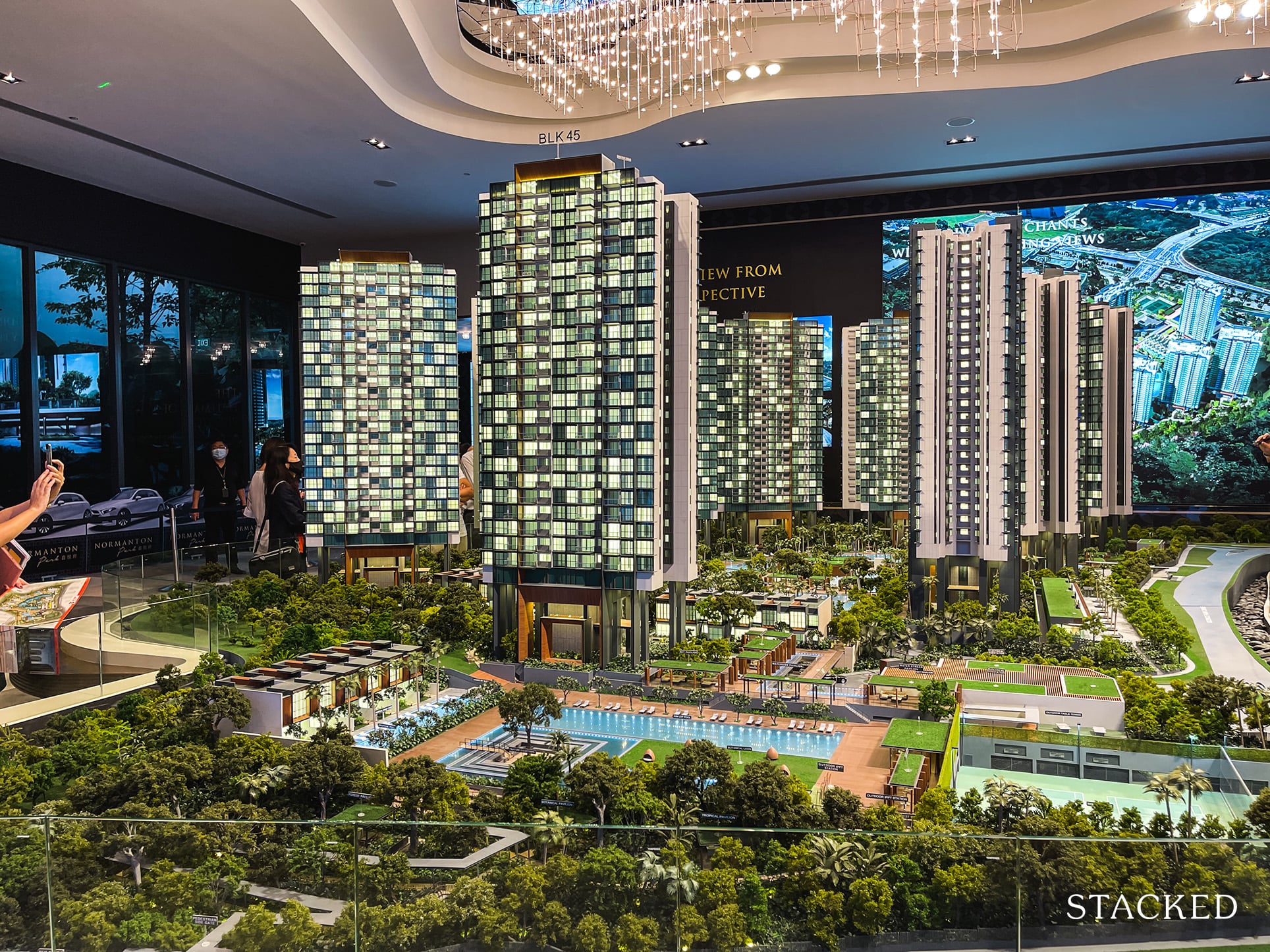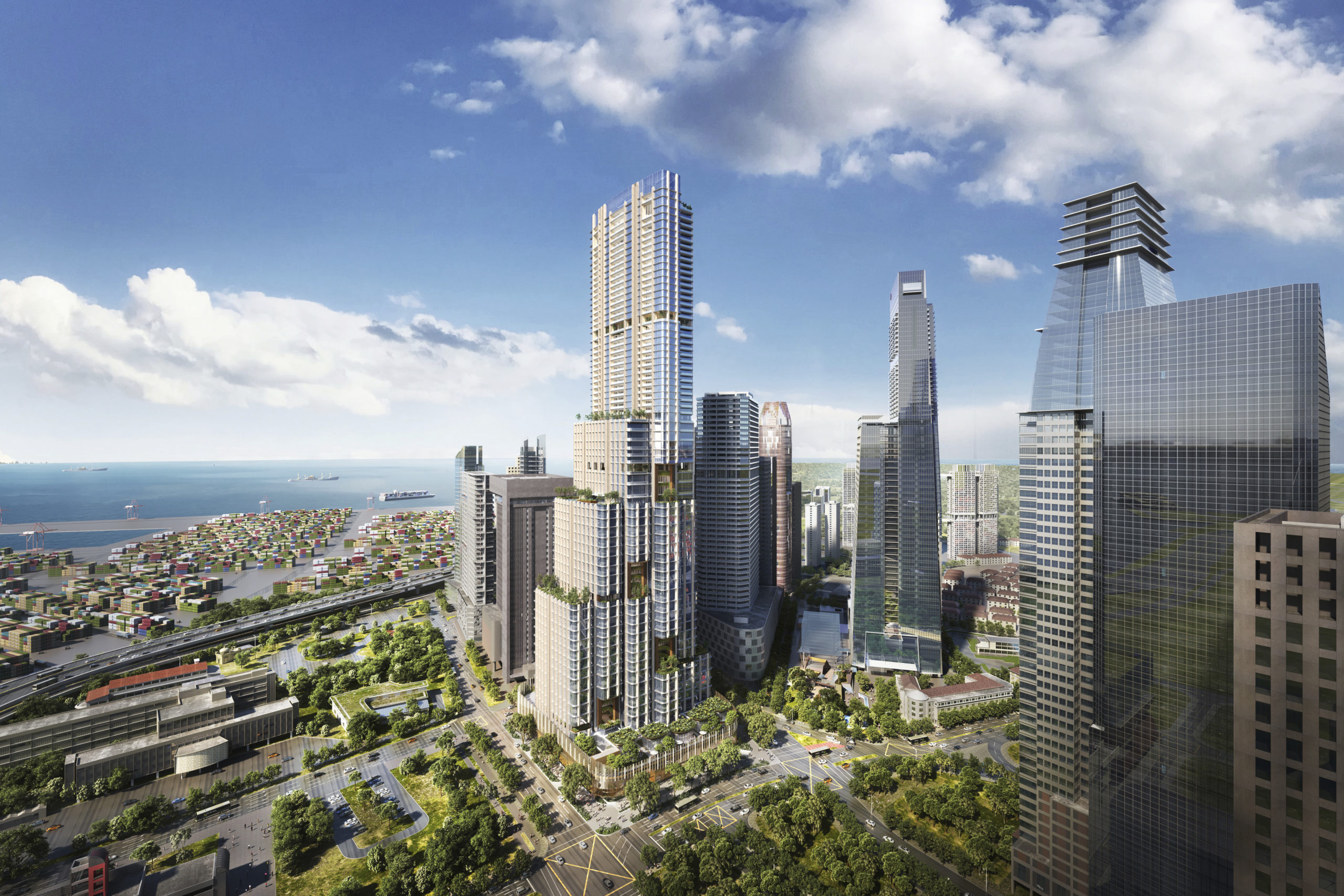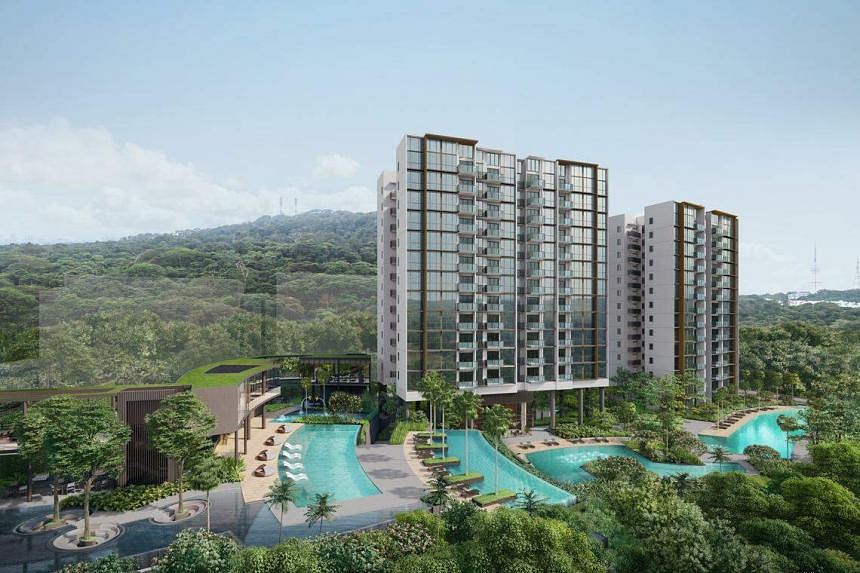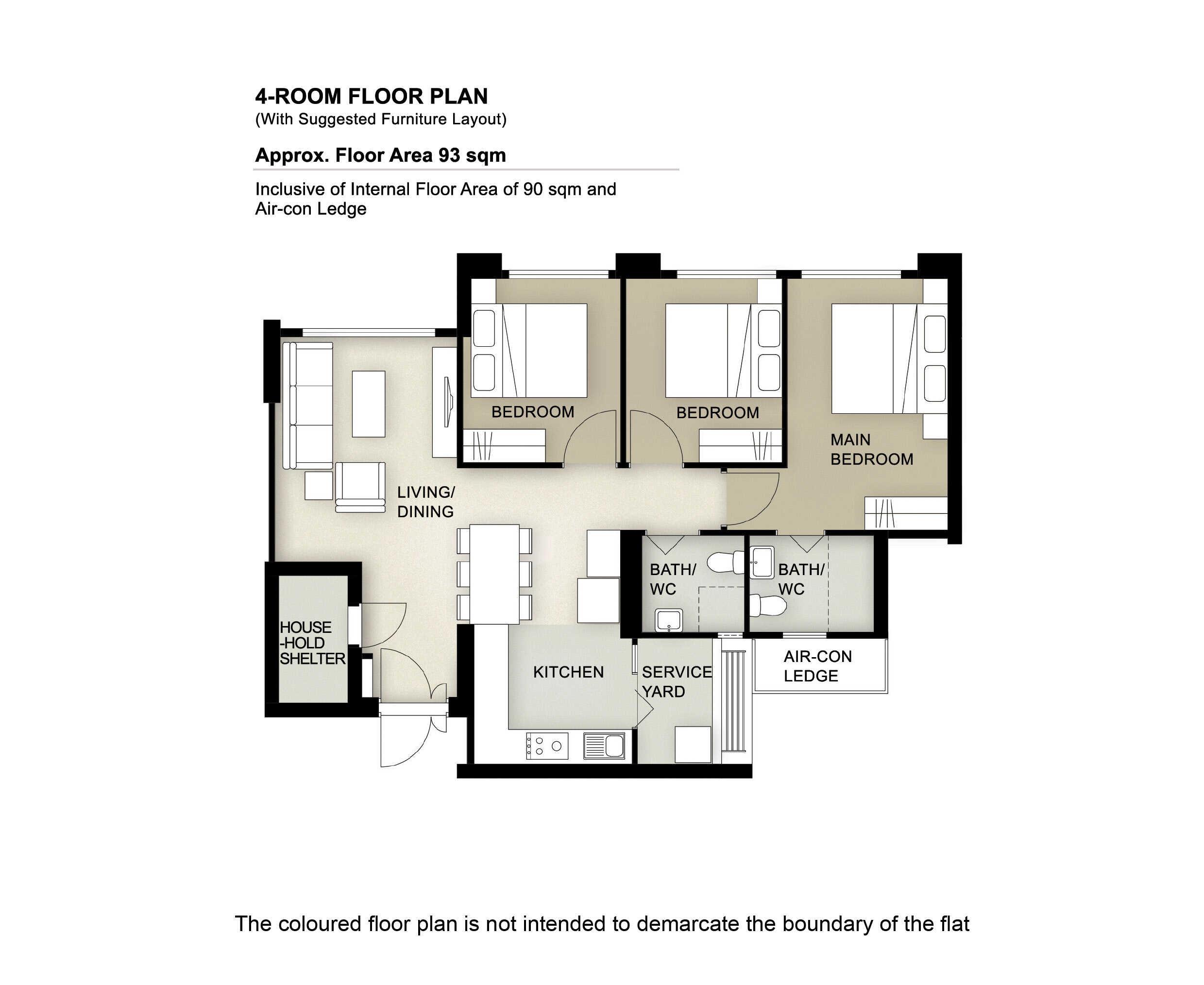If you’ve ever checked out home tours on YouTube, chances are you’ve come across one of Stacked’s beautifully shot home tours.
Stacked is an online editorial platform providing valuable content on Singapore’s real estate market.
They are known for their high-quality editorial pieces, including property guides, coverage on new BTO launches, analysis on condominiums, landed homes and more.
With the property market in Singapore always being a keen topic of interest, we’re excited to sit down with Adam Wham, Co-founder of Stacked to discuss real estate.

Real Estate
Are new condos still a good investment?
When people ask this, they’re really asking 2 things:
- Can I still make money buying a new launch Condo property (given the high prices today)?
- Why should I buy a new condo when I can buy an older condo that is bigger and cheaper?
Let’s discuss each.
Can I still make money buying a new launch Condo property (given the high prices today)?

When you look at the data from those who’ve previously purchased at the peak, it’s also about when you exit that will determine if you make a profit or a loss.
So the holding period matters.
Next, we’ve also looked at new and resale transactions in terms of profitability and based on actual transactions, and we don’t see much of a difference on average.
I remember back in 2018/19, there were talks of an oversupply issue.
We had friends and clients who chose to take a backseat to see how the market played out.
Those with a strong belief the market was overpriced missed out.
New launches and resale properties have both risen strongly since.
Of course, some rose more than others.
But in the end, it doesn’t boil down to “new” vs “resale”, it’s down to a lot of other factors like layout and competition in the area.
Sometimes, these are only apparent on hindsight.
Why should I buy a new condo when I can buy an older condo that is bigger and cheaper?

Old condos with a lower $PSF may seem attractive, but sometimes the renovation cost required to bring it up to what you want could be high.
The space could also be too big such that even though it’s cheaper on a $PSF basis, the overall cost could still be comparable to or higher than a new launch.
Due to changing consumer tastes, not many people may want the extra space if they don’t find it useful. For example, an overly large dining that’s separate from the living may not be necessary.
Even if the older condo is also cheaper, it could be because it’s an old leasehold development that’s subjected to greater depreciation. The older condo may also be more run-down or require more maintenance, so it may not be to the homeowner’s liking.
Old condos with a lower $PSF may seem attractive, but sometimes the renovation cost required to bring it up to what you want could be high.
The space could also be too big such that even though it’s cheaper on a $PSF basis, the overall cost could still be comparable to or higher than a new launch.
Besides, some people like new launches for the flexibility (of choosing the unit they want), as well as the timelines for payment.
With resale, you’re pretty much waiting for something you like to come along.
You never really know what could come up, and waiting long could result in being priced out too and we’ve seen this play out over the past 3 years.
waiting long could result in being priced out
Those who waited in 2020 to buy a 3-bedder on the lower scale of the budget find themselves stuck today with a budget that’s only fit for a 2-bedroom + study at the most.
If you could find a resale condo that’s cheaper but ticks all your boxes than a new launch that also ticks all your boxes exactly, then the choice is clear. But the choice is never this clear.
Freehold condos retain their value better for the longer term, so are they a better purchase than leasehold ones?

A big part of this debate is due to a lot of beliefs that stem from the past.
The Singapore property market is very different today as compared to what it was in the early days, and the belief that freehold is better than leasehold is one that has been perpetuated for a long time.
Generally, it’s best not to be fixated on a particular point as every property is different.
There are so many things that are variables to consider, and so many things have changed in the past few years (cooling measures, new rules), which will all play a part in how the property market performs.
Unless this is in your objective e.g. passing property down to your children in the future, making generalised statements could hide options that may have been great for you. So don’t buy based on whether it is a freehold/leasehold condo. Instead, consider each condo’s individual merits.
don’t buy based on whether it is a freehold/leasehold condo. Instead, consider each condo’s individual merits.
With regards to financial returns, there are old and new condos that make and lose money. Likewise for freehold and leasehold condos.
When we look at unprofitable developments, they’re usually a result of overpriced units being sold when it’s not yet built.
But if we look deeper, it’s also because the realities just don’t play out as well as the buyers thought they would, pointing to the fact that marketing has a lot to do in convincing buyers to pay more than what a development is really worth.
marketing has a lot to do in convincing buyers to pay more than what a development is really worth
It’s hard to fault both sides because the developer’s job is to sell for a good profit, while the buyer can’t predict if future buyers can accept a higher pricing. As a result, trying to decipher whether it’s worth paying for a condo is what makes real estate complicated.
Layouts, future competition, build quality, buyer profiles in the area, how prices have behaved in the area compared to others – many factors come into play here. A good buyer agent is one who is able to provide insights on this rather than trying to hype up the area.
En bloc Market
Let’s talk about something dear to Singapore homeowners… do you think the en bloc market will heat up again?
There are 2 aspects to look at here:
- The developer’s appetite for specifically en bloc deals
- The developer’s appetite for more land inventory
It’s hard to really say what will happen moving forward, but we can see that the Government has been pushing out GLS land quite aggressively.
The developer’s appetite for specifically en bloc deals
First, the developer’s appetite for en bloc deals specifically.
The housing affordability issue in Singapore has resurfaced given the recent surge in property prices. The government has since announced a series of measures, one of which is the release of more land. This would directly impact en bloc sales.
Developers find it difficult to meet in the middle with sellers. With lower margins, developers can’t afford to pay too much such that it makes sense for them later on since it means having to sell much higher. Sellers, on the other hand, want a higher price due to high replacement costs today, a big factor being the high property prices.
Another issue is uncertainty for the developer.
Just like a typical buyer/seller transaction, it’s really a “buyers beware” deal – if there was a huge boulder or other structure found below the building that wasn’t uncovered before that could hinder the potential of the site, that’s on the developer – not the sellers.
The timelines are also a lot easier to work with when dealing with a GLS rather than a collective sale. As such, if more GLS are released, then we can reasonably expect that developers would be less inclined to opt for en bloc deals.
The developer’s appetite for more land inventory
Next is the appetite for more land inventory and this relates to risk.
When the 5-year ABSD ruling kicked in, developers were faced with the pressure to buy and sell within a 5-year period or face the penalty of forfeiting a large percentage of the cost of the land.
This would naturally bring about a shorter period between en bloc cycles since developers have to sell quickly and replenish their land inventory.
However, the increase in the 5-year ABSD rate also means that developers are extra sensitive about the deals they make. The penalty is just much higher – so the risk is higher. As seen from projects like Chuan Park, an en bloc deal can be more complicated, and any delays mean that there’s an opportunity cost as well.
Currently, the high-interest rates also make the financing of such projects costly. With each year they cannot pay the loan down, there are increased costs that eat into their margins. Developers are also faced with smaller margins as a whole with the rise in construction costs. Consumers are wary of high property prices now too, so they’re facing pressure on both sides.
BTO Units
How to choose the best BTO unit?

The “best unit” can mean different things to different people.
However, most would prefer:
- a good unblocked view,
- one that doesn’t face any MRT tracks, major roads or the opposite block too closely,
- has a north-east facing for the best cross-ventilation and lack of direct west sun.
Higher floors tend to be preferred, however, there are those who prefer lower floors e.g. between 5 to 15 so the lift travel time wouldn’t be too high.
Some people may also dislike looking out from too high a floor as it can be nauseating.
Ultimately, this is a personal preference.
BTW – we share commentary on Singapore Investments every week, so do join our Telegram Channel (or Telegram Group), Facebook and Instagram to stay up to date!
I also share great tips on Twitter.
Don’t forget to sign up for our free weekly newsletter too!
What is important to look out for when picking a BTO unit?
The layout is very important.
Is the service yard able to accommodate both a washer and dryer comfortably?
Where is the access point to the AC ledge – do they have to go through the master bedroom which is more intrusive, or can they go through the service yard?
Can the walls be hacked to provide a fully open layout?
Do you prefer a separate dining and living space, or a combined one? Both cater to different people. Generally, one that’s combined is better since that appears more spacious and allows you to play around with your lifestyle needs rather than being restricted to a space.

There are nuances such as the number of units per floor, lift-to-floor ratio and how far each unit is from the lift. Then there’s also the stacks – corner units are better than those along the corridor since they tend to have more common areas to use and greater privacy.
The location of the bin also matters. Is the burning bin also right in front of your stack?
On a lower floor, does the stack face an often-used facility such as the playground or is a high-traffic walkway area? Is the unit on a floor where the Sky Garden is? If so, you can expect less privacy.
In the end, balloting for a BTO unit is really down to luck. You can prepare answers to the above and pick out the units you want, but you might not be given a choice later on anyway, so be prepared to settle.
Stacked
Since we last connected, how has Stacked evolved?
After a year of adapting to our audience, we’re fully invested in providing video content focused on interior spaces and interesting homes that go on sale.
Since we’ve built an audience that’s into design over the past 2 years, we decided to open an online home decor store. It’s still a WIP, but we are looking at building out our studio and having a strong online/offline channel for the store.
Check out our first interview with Adam here, where we discuss how to find a good property!
What would you say is Stacked’s greatest strength?
We’re able to keep to our brand’s ethos of being authentic and real which is seen throughout all the works that we do.
None of the articles that we write are sponsored, and we’ve always focused on authenticity when it comes to our videos. This can be seen from how we engage with homeowners to share more about their homes in our Living In YouTube series. The products we bring in for our store are also hand-picked and curated by us – and we only work with authentic brands.
What do you think viewers resonate with the most with Stacked’s YouTube series?
For us, we’ve always been fascinated by homes, and we realised there wasn’t a channel in Singapore that was showcasing homes in a way that we knew viewers would enjoy watching.
Our goal is to provide viewers with an authentic look into homes and interior design. We want our viewers to feel like they’re right there with us, exploring these homes in the best way possible.
The concept of ‘home’ is something that resonates universally with people. Whether you’re a homeowner, a renter, or simply someone who dreams of their ideal living space, we aim to tap into that shared experience. We want viewers to connect with our content on a personal level because, at some point in their lives, everyone has a connection to the idea of ‘home.’
Any interesting behind the scenes stories?
While there aren’t any wild and crazy stories, there have been some truly meaningful and heartwarming behind-the-scenes moments.
One particular memory that stands out is when a homeowner extended an unexpected invitation to our crew after a shoot. They insisted that we stay behind, enjoy drinks, and share a meal with them. It was a touching gesture of appreciation for our work and the connection we had built while exploring their home. What began as a professional encounter turned into an evening of bonding and laughter.
What’s even more remarkable is how some of our crew members have developed genuine friendships with homeowners we’ve featured. Beyond the camera, they’ve stayed in touch. It’s a testament to the profound connections that can be forged through our shared love for homes and interior design. These interactions remind us that our work isn’t just about showcasing beautiful spaces; it’s about the people who inhabit them and the stories they have to tell.
You can find Stacked on YouTube, @stackedhomes on Instagram, and @stacked.homes on TikTok.
Trust Bank Account (Partnership between Standard Chartered and NTUC)
Sign up for a Trust Bank Account and get:
- $35 NTUC voucher
- 1.5% base interest on your first $75,000 (up to 2.5%)
- Whole bunch of freebies
Fully SDIC insured as well.
It’s worth it in my view, a lot of freebies for very little effort.
Full review here, or use Promo Code N0D61KGY when you sign up to get the vouchers!
Investment Research Tools
I use Trading View for my research and charts. Get $15 off via the FH affiliate link.
I also use Koyfin for fundamental and macro research. Get a 10% discount via the FH affiliate link.
Portfolio tracker to track your Singapore dividend stocks?
I use StocksCafe to track my portfolio and dividend stocks. Check out my full review on StocksCafe.
Low cost broker to buy US, China or Singapore stocks?
Get a free stock and commission free trading Webull.
Get a free stock and commission free trading with MooMoo.
Get a free stock and commission free trading with Tiger Brokers.
Special account opening bonus for Saxo Brokers too (drop email to [email protected] for full steps).
Or Interactive Brokers for competitive FX and commissions.
Best investment books to improve as an investor in 2023?
Check out my personal recommendations for a reading list here.
Even with the high price and high interest, I still think getting a condo is a good move provided you can get one for the right price. Great interview and have always enjoy Stacked youtube videos. Cheers!
Thanks – appreciate the sharing!